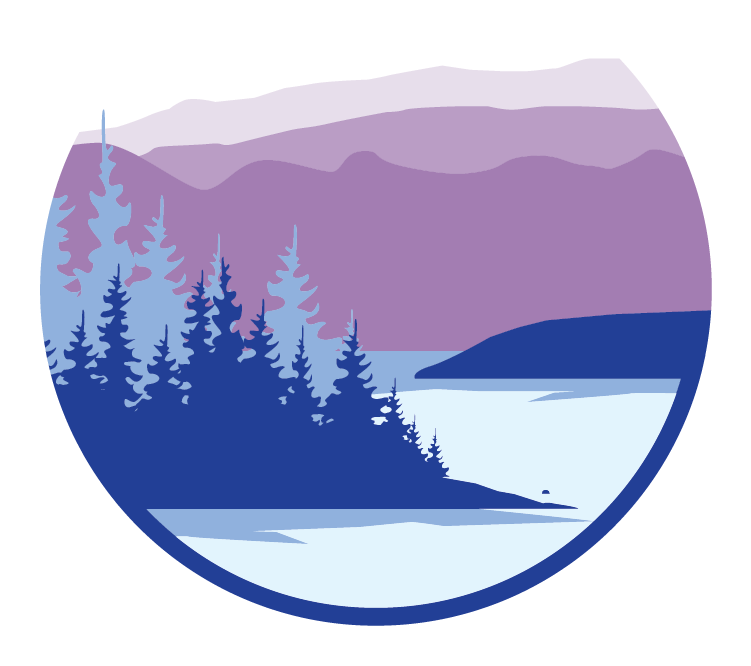
Climate Change and Human Health in Montana
Climate Change and Human Health
Three aspects of projected climate change are of greatest concern for human health in Montana:
Increased summer temperatures and periods of extreme heat, with many days over 90ºF (32ºC)
Reduced air quality from smoke, as wildfires will increase in size and frequency in the coming decades
More unexpected climate-related weather events (i.e., climate surprises), including rapid spring snowmelt and flooding, severe summer drought, and more extreme storms.
Extreme Heat
Extreme heat is the most pervasive issue of health concern, with statewide increases in annual temperature of potentially 4-6ºF (2.2-3.3ºC) by mid century and possibly as great as 9.8ºF (5.4ºC) by the end of the century, based on RCP8.5 (upper-bound) emission scenario.3 This rise in temperature continues a warming trend that the state has already experienced during most of the last 120 yr, and especially since 1950.
Human health vulnerability to heat is most often expressed as a combination of three factors: adaptive capacity, exposure to heat, and sensitivity to heat (Smit and Wandel 2006; Füssel 2010; Inostroza et al. 2016) .
Solutions
-
• Encourage employers to improve the workplace environment and policies to reduce heat exposure. During extremely hot weather employers should, for example, provide outdoor workers ready access to shade, drinking water, and restroom facilities, plus allow break time for workers to cool off.
• Inform those working, playing, or otherwise spending extended time outdoors about the importance of resting, hydrating, and seeking shade to avoid potentially life threatening, heat-related health issues.
• Designate (or create) a cooling facility for your community or workplace where people can go during a heat emergency. Such a facility might be an air-conditioned school or community center, or a deeply shaded park, perhaps near a community swimming pool, lake, or river.
• Ensure vulnerable populations (see Section 4) understand heat-related health issues and have a plan for staying cool. For example, develop programs to ensure access to cool community spaces. Likewise, ensure that those most vulnerable to extreme heat have window fans or air conditioners.
• Create incentives and programs to address the rising urban heat-island effect (USEPAd undated). Examples include substituting lighter colored materials in place of black asphalt and tar on roads and driveways, and encouraging more environmentally friendly building practices, including cool roofs, constructed with light colors and heat-reflecting materials.
•Create incentives, programs, and/or campaigns to plant and care for trees and other vegetation to create shade (USEPAe undated).
Air Quality (Wildfire Smoke)
Smoke is likely to become a persistent seasonal feature of our climate, as wildfires become ever larger and more severe across the western US. Smoke fills our valleys from local wildfires, as well as those burning in other western states and Canada. Particulate matter from these fires traps heat, reduces visibility, and creates dangerous air quality conditions. Since the 1970s, the US fire season has lengthened from 5 to over 7 months/yr (see Section 3), and parts of the country now experience wildfires year-round. The link between rising temperature and fire activity is clear: warming summers dry vegetation, and increasing fuels set the stage for fires to ignite and spread. Learning to live with fire has become a priority for Montanans, as increased fire management will not return us to fire frequencies and sizes of the past. Likewise, making our communities better adapted and more resilient to fire and smoke is now a priority in planning efforts (Schoennagel et al. 2017; McWethy et al. 2019).
Solutions
-
• Implement sustainable construction and encourage new housing in more sustainable and fire-safe areas (Zakaria 2020). Learn more about building fire resilience in your community through an excellent online resource titled “The science of firescapes: achieving fire-resilient communities.”7 The Federal Emergency Management Administration provides relevant checklists for homeowners (FEMAb undated) and communities (FEMAc undated).
• Educate homeowners about assessing fire risks to their homes, checking with their insurance company on the terms of their homeowner’s wildfire coverage, and, if needed, reducing fuels around their home.
• Develop or enhance emergency response plans for forest and grassland wildfires. Create a community database of people who would need physical assistance to evacuate if required, and determine who will help those people in such emergencies.
• Inform homeowners about options to create safe indoor air using HEPA portable air cleaners, MERV 13 air filters, or HVAC (heating, ventilation, and air conditioning) systems. See the Personal/Air Quality/Indoor Air subsection below and the Climate Smart Missoula guide to filtration systems.
• Consider funding air filtration in public spaces, for example in schools, daycare centers, senior centers, municipal buildings, evacuation shelters, houses of worship, and gyms and recreational facilities. Such work is underway in Montana: the team at Climate Smart Missoula donated portable HEPA air cleaners to those who were most vulnerable.
• Encourage employers to reduce workers’ exposure to smoke and particulate matter. For example, employers could halt or limit outdoor work during periods of poor air quality, schedule (if possible) employees to work at alternative sites having less hazardous air quality, or provide protective breathing masks appropriate to the conditions.
• Encourage schools, organizations and employers to implement the federal Air Quality Flag Program.9
• Work with the Montana Climate Office and Department of Environmental Quality to ensure a) your community has a weather station with added sensors for particulate matter (PM2.5 and PM10); and b) that the public has online access to both real-time and historical data.
-
• Develop strategies to integrate climate adaptation with disaster mitigation plans, wildfire plans, drought and flood plans, and others that can support resilience planning and facilitate implementation.
• Engage local, regional, and tribal health providers in developing a response to extreme climate events that lead to heat exposure, vector-borne diseases, water-related illnesses, food safety and nutrition concerns, smoke-related cardio-respiratory problems, allergies, and mental health issues.
• Explore opportunities to integrate adaptation planning with planning to reduce GHG emissions, especially when solutions strengthen local resilience to potential regional energy disruptions and further local economic development goals (see recommendation 2AF).
-
• Ensure local governments have access to updated information concerning current and future high-risk floodplain and wildfire-prone wildland-urban interface zones. Support state and local code updates to further reduce risks and impacts.
• Support local governments to integrate flood, disaster, and wildfire protection planning with community land use planning and decisions when requested by local officials.
• Ensure local infrastructure such as schools, hospitals, community centers, and shelters incorporate adaptation strategies to address the needs of the young, sick, aging, and other vulnerable populations related to climate impacts such as smoke and air quality, extreme heat, flooding, winter emergencies, and distributed energy needs.
• Expand the use of nature-based solutions that use natural systems, mimic natural processes, or work in tandem with traditional approaches to address natural hazards such as flooding, erosion, drought, and heat. Incorporating these nature-based solutions in local planning, zoning, regulations, and built projects can help communities reduce their exposure to these climate impacts, resulting in reduced costs, economic enhancement, and safer, more-resilient communities. Examples include urban park development, beaver mimicry, and wetland and riparian restoration.
• Increase urban forest cover in communities large and small to provide cooling shade, sustain public health, and reduce energy consumption. Select native tree species that maximize water use efficiency, carbon sequestration, and shade quality.
-
• Develop and strengthen networks of outdoor recreation and tourism professionals across agencies, jurisdictions, and the private sector to improve collaborative approaches to identifying risks and vulnerabilities and to facilitate adaptation planning.
• Develop climate information and tools specific to the outdoor recreation and tourism sectors and include climate adaptation strategies related to outdoor recreation and tourism in local plans and policies (e.g., parks and recreation plans, hazard mitigation plans).
• Identify and support funding strategies to address local business recovery needs – particularly in the travel and tourism sectors – from unplanned disasters associated with climate-related weather events.
-
• Recognize Montana producers for their high adoption rates of soil health practices including no/conservation tillage and cover crops, improved grazing systems, and efforts to maintain and restore native rangelands.
• Explore partnerships with producers and their associations to research conservation practice adoption factors, cost savings, and climate-related co-benefits, such as carbon storage, increased water-holding capacity in soils, and reductions in pest and disease risks.
• Explore opportunities for Montana farmers, ranchers, and forest landowners to diversify income streams through emerging GHG markets by developing pilot projects or programs that aggregate and quantify enhanced GHG management. Consider other creative efforts that reward producers for climate resilience and GHG management, such as cost-share or insurance premium reduction payments, marketing and labeling tools, and others.
• Expand operator and manufacturing capacity and diversification of uses of long-lived wood products
-
• Continue to address wildland fire risks through coordinating interagency planning and response, supporting wildfire-adapted communities, and building resilient landscapes through active forest management to improve safety and protect communities across ownership boundaries.
• Maintain fire-adapted landscapes in priority regions using the updated Montana Forest Action Plan13 for guidance. Enhance forest management and restoration across ownership boundaries, including the use of prescribed fire to maintain structure and composition to increase resilience to insects, disease, and uncharacteristic stand-replacing wildfires; protect municipal watersheds; and maintain the long-term capacity of forests to continue to buffer emissions as natural carbon sinks.
• Facilitate fire-resilient communities through planning efforts that include consideration of new fire-adapted landscape and building materials, active community participation, fire education, and reduced development in fire prone areas.
• Collaborate with wildland firefighting agencies, MT DEQ, local public health agencies, and others to enhance local air quality monitoring and support indoor air quality needs for vulnerable communities during intense periods of wildfire smoke.
-
• Promote best management practices for building resilience in rangelands by increasing soil carbon and soil water-holding capacity
• Support establishment or enhancement of infrastructure that improves grazing management on rangeland, including technologies for monitoring range and stock water conditions, livestock behavior changes with climate changes, and livestock health.
• Strengthen existing partnerships and build new collaborations across landowners and jurisdictions to share knowledge and ensure that needs for landscape-scale conservation and adaptation are incorporated into relevant planning and management.
• Conserve, enhance, and restore rivers, streams, lakes, reservoirs, wetlands, and riparian areas that are critical to fish, wildlife, and plant populations. Provide for aquatic organism passage, where appropriate.
• Continue to prevent and minimize the spread of invasive species and insect and disease infestations that can be exacerbated by climate change, including policies developing or continuing support of programs for monitoring, early detection, and rapid response.
-
• Promote wetland and stream function through a) restoring and conserving river corridors, floodplains, and wetlands and b) supporting related education efforts.
• Integrate local drought and water quality planning into other climate and land-use planning efforts.
• Invest in tools to improve statewide monitoring and assessment of water resources.
• Incorporate green infrastructure and adaptive water management that combine flooding mitigation, water storage, and water quality improvement into stormwater infrastructure and natural storage utilizing ditches, floodplains, and irrigated lands.


